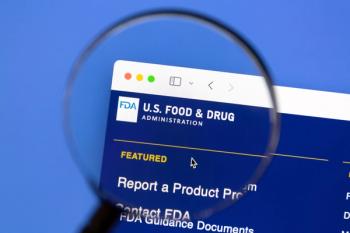
Off-Label Prescribing Usually Not Backed by Strong Scientific Evidence
An analysis of electronic health records in Canada revealed that almost 4 out of 5 off-label prescriptions were not backed up by strong scientific evidence.
An analysis of electronic health records in Canada revealed that almost 4 out of 5 off-label prescriptions were not backed up by strong scientific evidence.
A study of prescribing patterns in Canada has revealed that 1 out of 9 prescriptions was written for an off-label treatment indication and almost 4 out of 5 off-label prescriptions lacked strong scientific grounding. The study, which was carried out by researchers at McGill University in Montreal, was published online on April 16, 2012, in Archives of Internal Medicine.
The researchers note that off-label prescribing is not necessarily harmful, but it is thought to contribute to adverse drug events. Some notable examples include fenfluramine-phentermine, which has been shown to cause cardiac valve damage; tiagabine, which is approved to treat partial seizures, but has caused seizures and status epilepticus when used off-label to treat psychiatric conditions; and quinine, which has led to serious adverse events, including thrombocytopenia and gastrointestinal bleeding, when used to treat nocturnal leg cramps.
Despite these individual examples, the researchers point out that there has been no systematic risk-benefit analysis of off-label drug prescribing. In addition, little is known about the factors that contribute to off-label prescribing and investigating these factors is difficult because treatment indication is not generally a required part of prescriptions, so off-label use must be inferred from other medical records.
In the current study, the researchers used primary care electronic health records (EHRs) from the Medical Office of the XXI Century electronic health network in Quebec, Canada, which does require documentation of treatment indication with prescriptions. The researchers analyzed 253,347 electronic prescriptions written by 113 primary care physicians for 50,823 patients covering 684 different drugs between 2005 and 2009.
The treatment indication for each prescription was classified as on-label or off-label according to the Health Canada drug approval database. Off-label indications were further classified by the level of evidence supporting the drug’s efficacy for the indication in question. An off-label indication was considered to be backed up by strong scientific evidence if the following 3 criteria were met: the drug was considered to be effective or to favor efficacy for the indication; the drug was recommended for most or all patients with the indication; and studies evaluating the drug’s efficacy for the indication included at least 1 randomly controlled trial.
The results found that the prevalence of off-label use was 11.0% and that 79.0% of the off-label prescriptions were not backed up by strong scientific evidence. Off-label use was highest for central nervous system drugs (26.3% of prescriptions), including anticonvulsants (66.6%), antipsychotics (43.8%), and antidepressants (33.4%). It was also high for anti-infective agents (17.1%) and ear-nose-throat medications (15.2%). The lowest off-label prescribing rates were for formulary-restricted drugs (2.9%) and blood and coagulation drugs (1.7%).
Strong scientific support was lowest for off-label use of antineoplastic (0%) and ear-nose-throat (1.6%) drug classes and highest for cardiovascular (58.5%) and dermatologic (65.9%) drug classes. Specific drugs with the highest rates of off-label use included quinine (99.5%), gabapentin (99.2%), clonazepam (96.2%), amitriptyline (93.7%), trazodone (92.6%), and betahistine (91.5%). Indications most likely to be treated off-label included nocturnal leg pain and benign positional vertigo, for which 100% of prescriptions were off-label. Neurogenic pain was treated off-label 99.5% of the time with drugs that included gabapentin, amitriptyline, and topiramate. Other indications with high rates of off-label prescription included fibromyalgia (67.0%), arrhythmia (60.2%), generalized anxiety disorder (46.5%), and insomnia (43.6%).
Drugs that had 1 or 2 indications were significantly more likely to be used off-label than those that had 3 or 4 indications. However, some single-indication drugs, such as antimigraine and antidiabetic agents, had among the lowest levels of off-label use, suggesting that their mechanisms of action are so specific that they do not lend themselves to use for other indications. Likewise, drugs approved for use before 1981 were significantly more likely to be used off-label than those approved after 1995, most likely because clinicians have had more time to experiment with off-label uses. Older drugs are also generally off-patent, so they lack a sponsor to perform trials and apply for new indications to be added to their labels.
Physicians who had an evidence-based orientation to medicine were less likely to prescribe drugs off-label. For each additional 5 points that a physician scored on the evidence section of the Evidence-Practicality-Conformity Scale, they were 7% less likely to prescribe drugs off-label in general, and 10% less likely do so when strong scientific evidence was lacking. In addition, sicker patients were less likely to receive off-label prescriptions, perhaps because their poor health left clinicians less comfortable taking risks with their care.
The researchers note that, to their knowledge, this is the first study to assess off-label prescribing using an EHR platform that explicitly linked treatment indications to prescribed drugs. They add that their findings could help bring attention to treatment indications that are associated with frequent off-label use that might benefit from new drug development or randomized controlled trials. They also note that a previous, US-based
To read the study, click
Newsletter
Stay informed on drug updates, treatment guidelines, and pharmacy practice trends—subscribe to Pharmacy Times for weekly clinical insights.


















































































































































































































